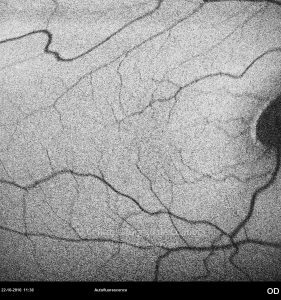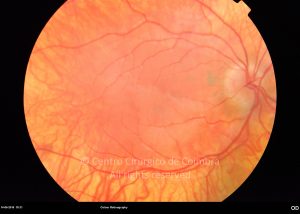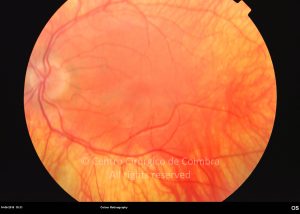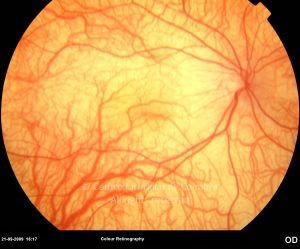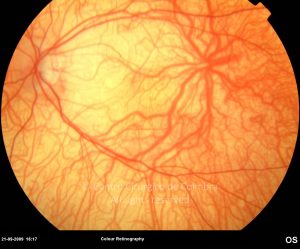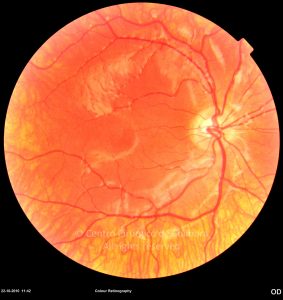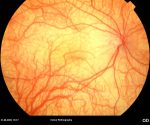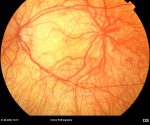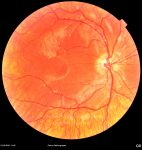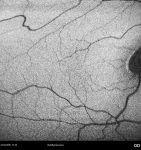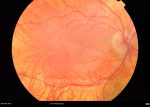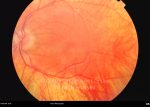Albinism is a genetic disorder characterized by the reduction or absence of melanin synthesis. This condition is called oculocutaneous if the skin, hair follicles and eyes are all affected. If the albinism affects only the eyes, it is called ocular albinism. Ocular albinism is usually transmitted as an X-linked recessive disorder.
Ocular findings include reduction of pigmentation in the iris and retina, photophobia, refractive errors, nistagmus, reduced visual acuity, foveal hypoplasia, and changes in the nerve fibers.
Variants of oculocutaneous albinism include Chediak-Higashi syndrome (recurrent infections, anemia, thrombocytopenia, neutropenia, leukemia and lymphoma), and Hermansky-Pudiak syndrome (pulmonary, intestinal, and clotting disorders).
Waardenburg syndrome is another disorder that presents hypopigmentation. Patients have a lock of hair on the forehead that grows without pigmentation, and absence of pigmentation in one iris.





